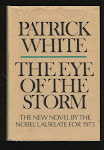
Wow! Bang! Kapow! Splatt! This book packs a punch – the Prague Ghetto and WW2, comic book heroes, morphine addiction, the Arctic Circle, American Nazi bomb plots at Barmitzvahs, a terrible gay rape scene, fathers and sons, sex, love, and loss. This is a great book and definitely should be brought onto the desert island. Thanks to Rachel and Sharon for packing it. Our two heroes, Joe Kavalier and Sam Clay, create an enormously popular comic hero, The Escapist, for whom there is no lock or chain that he cannot open to liberate the oppressed and shackled everywhere. It’s no coincidence that this comic book hero is born of Joe, who fled the holocaust, and his Jewish cousin Sam, who is also gay. The story tells how both these men ultimately find the key to their own painful liberation and escape. In this sense the comic book hero is presented here as a golem of their time – those Jewish mythical creatures who are artificially created with supernatural powers. A kosher Frankenstein (duh, just noticed how Jewish that name is). According to Chabon, these creatures are our gestures of hope during times of despair and desperation - our longing for something to free us, to escape, “to slip, like the Escapist, free of the entangling chain of reality and the straitjacket of physical laws”. Rather than join the chorus of the critics of these popular comics which see their escapist fantasies as corrupting, Chabon is suggesting that there is something noble in being able to call forward these heroes who, on our behalf do our bidding or our fighting, and restore the world as a just and fair place. But, the escaping that both Joe and Sam do in the end is not fantasy or fiction. Both Sam and Joe in different ways end up being wound in a final set of chains but manage to escape. And, like the great escape tricks of Houdini, they have their metamorphisis – less a matter of escape, but more a matter of transformation. In the end our two heroes do escape, are transformed, and again it is through love and generosity. The longing and escape into fantasy holds the potential, or keeps the spirit oriented in the right direction. So it got me thinking about the whole idea of hope, and how we can hang onto it in a way where we give up on the present and ironically become hope-less, or how, as in the case of this story, hope is the bright orienting star during the dark stormy nights of despair - it doesn’t lead to hopelessness, but helps us through it. Perhaps this is what Viktor Frankl was referring to when he describes how hope could pull one towards life, and transform our lives, even under the most tormenting of circumstances. I’m also beginning to think about the golem of our own time – ah, easy, the iPad.



